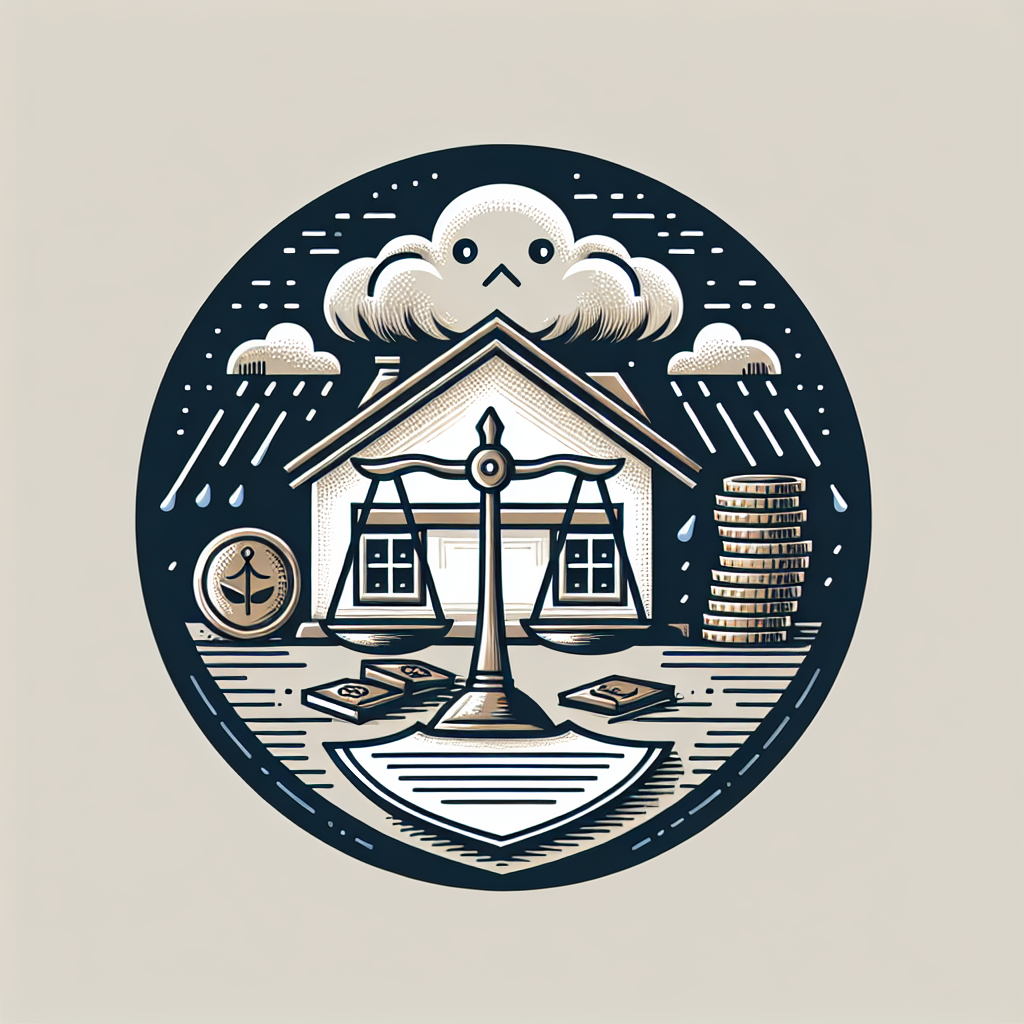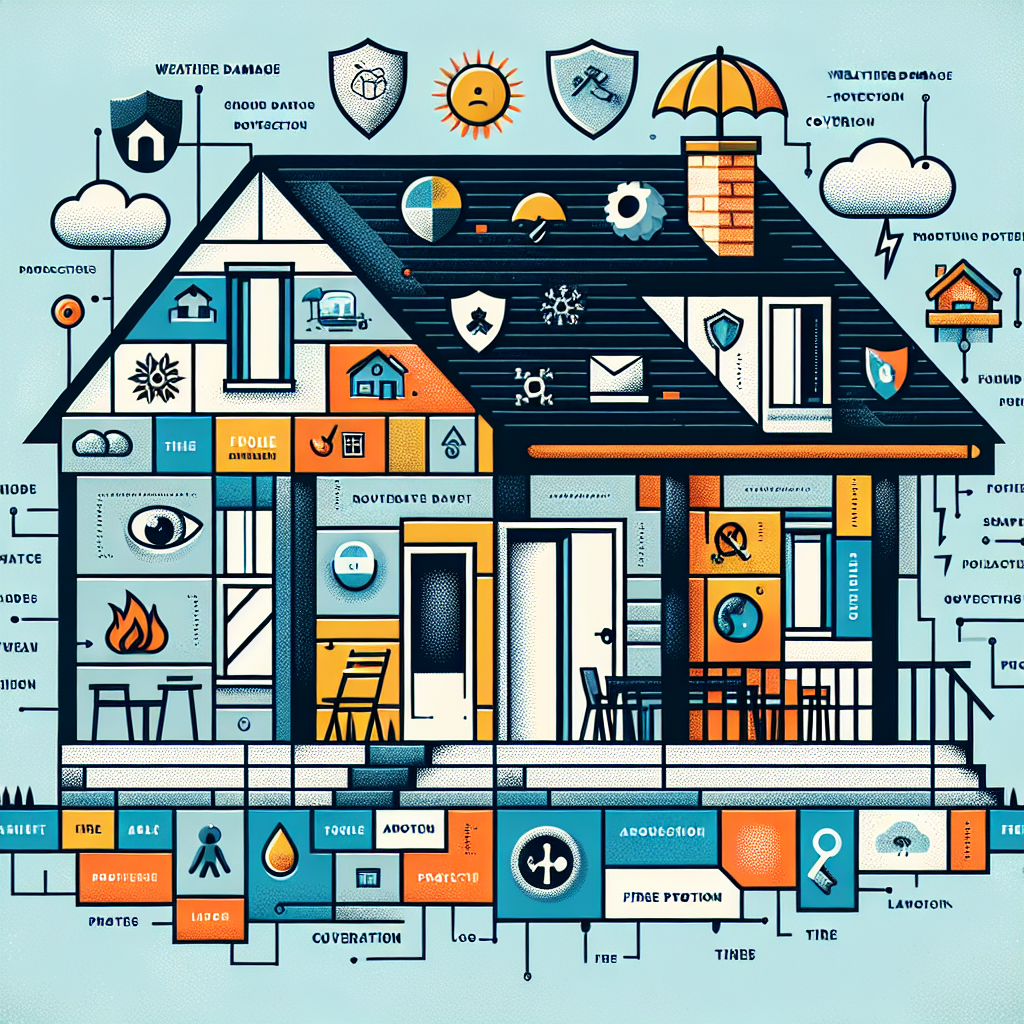Filed under Home Insurance on
Liability Home Insurance Coverage Explained

If you’ve ever wondered how your homeowners policy protects you when someone gets hurt on your property or claims you damaged their property, you’re in the right place. Consider this your practical guide to Liability Home Insurance Coverage Explained, written to demystify the fine print, give you data-backed insights, and help you confidently choose the right protection for your household.
Liability Home Insurance Coverage Explained in simple terms
At its core, personal liability on a homeowners policy pays for covered claims when you or household members are legally responsible for someone else’s bodily injury or property damage. It also typically covers your legal defense if you’re sued, even when a claim is groundless. Think slips on your walkway, a child’s errant baseball breaking a neighbor’s window, or your dog knocking over a visitor.
Most standard homeowners forms (like HO-3) include this protection automatically, with options to increase limits. While coverage is broad, it doesn’t cover everything—intentional harm, business activities, and auto accidents usually require specialty policies or add-ons. Keep reading for Liability Home Insurance Coverage Explained in practical, real-life terms.
Why liability coverage matters now
Liability claims have grown more expensive. Industry analysts point to three drivers:
- Medical cost inflation: Hospital and rehab costs continue to climb, pushing up average claim severity.
- Litigation trends: Attorney involvement and higher jury awards have increased legal costs—often called social inflation by insurers and reinsurers.
- Household risk factors: More pets, more backyard amenities (pools, trampolines), and more home-based services (like short-term rentals) introduce additional exposure.
The Insurance Information Institute has reported steady growth in the severity of dog-related injury claims over the past decade, with aggregate payouts nationally in the billions annually. Several reinsurer research briefs note liability claim costs outpacing general inflation in recent years. In short, the cost of a single incident can be financially disruptive without adequate limits.
What liability typically covers
Every policy is different, but most standard homeowners liability policies include these core protections:
- Bodily injury to others: Pays damages if someone is injured due to your negligence, on or off premises (for example, you accidentally cause a collision on your bicycle or your child injures someone during a pick-up game, subject to policy terms).
- Property damage to others: Covers unintentional damage you cause to someone else’s tangible property (for example, a fallen tree you failed to maintain damages a neighbor’s fence).
- Legal defense: The insurer typically hires and pays attorneys to defend you. In many policies, defense costs are in addition to your liability limit, but verify your policy wording and any sublimits.
- Medical payments to others (no-fault): This is a smaller coverage (often $1,000–$5,000 or higher if you choose) that can pay minor medical bills regardless of fault to help avoid escalation to a lawsuit.
- Personal injury (varies by policy/endorsement): Some policies include or allow you to add coverage for libel, slander, or wrongful eviction claims. If you write reviews, use social media, or rent out a room, ask your agent about this angle.
This is Liability Home Insurance Coverage Explained in terms of what you can expect when a claim happens—and where insurer support typically begins.
What’s not covered (common exclusions and gray areas)
Understanding exclusions is as important as knowing what’s covered:
- Intentional acts or expected outcomes: If you intentionally cause harm, liability coverage won’t apply.
- Business activities: Running a business from home, paid lessons, or hosting paid events often need a home-business endorsement or separate policy. Short-term rentals via hosting platforms usually require a specific endorsement.
- Motor vehicles: Auto liability belongs on an auto policy. Small recreational vehicles and trailers may have limited coverage; check your policy.
- Watercraft: Boats over certain lengths or horsepower often need separate coverage; small craft and kayaks may be included up to limits.
- Professional services: If you provide professional advice or services, you’ll need professional liability (errors and omissions) coverage.
- Intentional or criminal acts by insureds: Most policies exclude criminal acts and deliberate harm.
- Certain animal exposures: Some insurers exclude specific breeds or impose sublimits, while others underwrite on behavior history. Rules vary by state and carrier.
If you’re asking, what does Liability Home Insurance Coverage Explained leave out, these exclusions are the key areas to watch. When in doubt, ask your agent to review your activities and customize coverage.
How much liability coverage do you need?
Policy defaults often start at $100,000, but many insurance professionals suggest $300,000–$500,000 or higher. Here’s why:
- Medical and legal costs add up quickly. A single surgery, extended rehab, and attorney fees can surpass $100,000.
- Your total assets and future earnings are at risk in a serious lawsuit. Limits should reflect what you have to protect.
- Rising verdicts: Industry data shows larger awards are more common than a decade ago, especially in metropolitan areas.
For broader protection, many households add a personal umbrella policy. A $1–$2 million umbrella typically costs a few hundred dollars a year and sits on top of your home and auto liability limits. It’s one of the most cost-effective ways to increase protection.
Real-world claim scenarios and typical costs
These examples illustrate how coverage responds. Actual outcomes vary by state, policy, and facts.
- Slip-and-fall on icy steps: Visitor fractures a wrist requiring surgery. Potential costs include medical bills, lost wages, and pain and suffering—often tens of thousands of dollars or more, plus legal fees if sued.
- Dog-related injury: A guest is knocked off balance, causing a knee injury. Settlements can range widely depending on severity and long-term impairment, with national averages steadily increasing over time.
- Backyard pool incident: A friend’s child is injured while playing. Claims involving children can be complex and costly; safety features (fences, alarms) matter both for prevention and underwriting.
- Off-premises property damage: Your child accidentally breaks an expensive piece of art at a neighbor’s house. Valuation disputes and specialty restoration can push costs up quickly.
- Libel or slander allegation: A neighbor claims defamation over a social media post. If your policy includes personal injury coverage (or you have an endorsement), defense and settlements may be covered, subject to terms.
Liability vs. medical payments to others
Medical payments to others is a goodwill coverage meant to resolve minor injuries quickly, regardless of fault. It’s not a substitute for liability coverage:
- Medical payments: Small limit, no-fault, fast resolution.
- Liability: Larger limits, triggered by legal responsibility, can include defense costs and settlements.
Raising the medical payments limit to $5,000 or more can be a low-cost way to reduce friction after minor mishaps.
What influences your liability premium
While liability is typically a smaller slice of your homeowners premium than dwelling coverage, several factors affect cost and eligibility:
- Location and legal environment: Areas with higher litigation frequency or medical costs can see higher rates.
- Household profile: Dog ownership, presence of a pool or trampoline, and frequent entertaining may influence underwriting.
- Claims history: Prior liability claims can affect pricing and availability.
- Credit-based insurance scores (where permitted): Correlate with claim likelihood in many states.
- Selected limits and endorsements: Higher limits cost more, but the price per dollar of coverage often declines as you increase limits.
- Bundling and safety features: Bundling with auto, installing fencing, pool alarms, camera systems, and documented maintenance can help with pricing and acceptance.
Ways to strengthen and tailor your protection
Consider these common add-ons and adjustments:
- Higher liability limits: Increase base limits to $500,000 before adding an umbrella.
- Personal umbrella policy: Adds $1–$5 million (or more) of liability protection over home and auto.
- Home business endorsements: For tutoring, music lessons, or consulting conducted at home.
- Short-term rental endorsement: If you use platforms to host guests, this is critical to avoid coverage gaps.
- Animal liability endorsement: If your carrier restricts certain breeds or has sublimits, look for tailored solutions.
- Watercraft endorsements: For boats exceeding standard policy thresholds.
- Landlord liability: If you rent out a separate property, use a landlord policy rather than a homeowners policy.
Step-by-step: choosing the right liability setup
- Assess your exposure: Consider your assets, income, household activities, and guest frequency.
- Set a target limit: Many aim for $300,000–$500,000 minimum; align with your net worth and risk tolerance.
- Add an umbrella: If your assets or income exceed base limits, add at least $1–$2 million.
- Disclose activities: Tell your agent about pets, pools, short-term rentals, or home businesses to prevent surprises at claim time.
- Compare carriers: Look at financial strength ratings and claims satisfaction scores from independent agencies and consumer surveys.
- Review annually: Life changes—new assets, renovations, a new dog—warrant a coverage check-up.
How a liability claim works
When an incident happens:
- Ensure safety first: Get medical help for anyone injured.
- Document: Take photos, collect witness contacts, and record details while fresh.
- Report promptly: Notify your insurer or agent. Early reporting helps preserve evidence and manage costs.
- Avoid admissions: Don’t admit fault or promise payments. Let the insurer investigate.
- Cooperate with your adjuster: Provide requested information; keep records of expenses and communications.
- Legal defense: If you’re sued, your insurer generally appoints defense counsel. Keep your insurer in the loop before speaking with third parties.
In many policies, defense costs are covered in addition to the limit, but confirm your policy’s specific language to understand how expenses are handled.
Risk management: simple ways to prevent claims
- Walkways and steps: Repair cracks, improve lighting, and use handrails. In cold climates, have a snow and ice plan.
- Pool safety: Self-closing, self-latching gates, four-sided fencing, pool alarms, and clear rules for guests.
- Dog etiquette: Training, secure fencing, and supervision around guests; post signage as needed.
- Home maintenance: Fix loose flooring, secure rugs, and keep clutter out of traffic paths.
- Events and gatherings: Manage crowd flow, serve food safely, and consider host liquor liability implications—policies vary by state and insurer.
- Contracts: For contractors, require certificates of insurance naming you as additional insured when appropriate.
- Social media mindfulness: Avoid defamatory or harassing posts; consider personal injury coverage where available.
Frequently asked questions
Does liability cover someone who gets hurt in my home?
Yes, if you’re legally liable for the injury, your personal liability can respond. Even if you’re not at fault, your medical payments coverage may pay limited medical expenses to help resolve minor incidents quickly.
Am I covered if my dog injures someone?
Often yes, but some insurers have breed restrictions or sublimits. Disclose your dog and training measures. If your carrier excludes certain risks, ask about endorsements or alternative markets.
Is my teen covered if they injure someone away from home?
Typically yes, because personal liability generally follows you and resident relatives worldwide for non-auto incidents. But auto accidents require auto insurance, not homeowners liability.
What if I rent my home on a short-term basis?
Many standard policies exclude business or rental exposures without an endorsement. Ask your agent for a host or short-term rental endorsement to close gaps.
Are defense costs included within my liability limit?
In many policies, defense costs are paid in addition to your liability limit, but some policies or endorsements can handle this differently. Read your policy or ask your agent for clarity.
Is there a quick resource for Liability Home Insurance Coverage Explained?
This guide is designed to be your practical overview of Liability Home Insurance Coverage Explained, but always confirm specifics with your insurer, as provisions can vary by state and carrier.
Common pitfalls to avoid
- Relying on default limits: $100,000 can be too low for today’s medical and legal costs.
- Not disclosing exposures: Undisclosed dogs, trampolines, or rentals can jeopardize coverage.
- Assuming personal injury is included: Libel/slander coverage may require an endorsement.
- Overlooking umbrella policies: Umbrellas are among the best value buys in insurance.
- Letting maintenance slide: Many injuries trace back to preventable hazards.
What experts and trends suggest
Consumer surveys consistently show higher satisfaction with carriers that communicate clearly during claims and provide proactive risk guidance. Independent research from insurance institutes and reinsurer briefings points to sustained upward pressure on liability claim severity driven by healthcare costs and litigation trends. Against this backdrop, professionals increasingly recommend higher base liability limits and umbrellas for households with growing assets or above-average exposures. That’s the big-picture context for Liability Home Insurance Coverage Explained in 2025 and beyond.
How to talk to your agent
Have a candid conversation using specifics:
- Inventory assets and income: Aim to protect what you’ve built and future wages at risk in a serious claim.
- List exposures: Pets, pools, home-based work, volunteer roles, youth sports coaching, short-term rentals.
- Ask targeted questions: Are defense costs outside the limits? Are there animal or trampoline restrictions? Is personal injury included?
- Explore options: Higher limits, umbrella, and endorsements aligned to your life.
Quick worksheet to right-size limits
- Estimate net worth: Home equity, savings, investments, vehicles, valuables.
- Consider future income at risk: Many advisors suggest aligning limits plus umbrella to at least match this number.
- Map exposures: Pool, pets, youth activities, social media use, rental activity.
- Select base liability: Typically $300,000–$500,000.
- Add umbrella: $1–$2 million minimum for most families; more if net worth is higher.
- Confirm endorsements: Personal injury, animal liability, short-term rental, home business.
Putting it all together
Here’s Liability Home Insurance Coverage Explained in one sentence: It’s the part of your homeowners policy that helps pay when you’re held responsible for others’ injuries or property damage—and it pays for your legal defense, too, up to the policy terms. Because claim costs and lawsuit risks have climbed, many households choose higher limits and add an umbrella for peace of mind.
Key takeaways
- Liability protects your assets and future income from covered claims and lawsuits.
- Default limits are often too low; consider $300,000–$500,000 or more plus an umbrella.
- Disclose risk factors and get endorsements for business, rentals, animals, and watercraft.
- Prevent claims with safety upgrades, maintenance, and smart hosting practices.
- Reassess coverage each year as your life and assets evolve.
If you were searching for Liability Home Insurance Coverage Explained to finally make sense of the details, you now have the framework to evaluate your current policy and upgrade where it matters.
Final word
Insurance works best when it’s tailored. Use this guide—Liability Home Insurance Coverage Explained from the ground up—to start a focused conversation with your agent. Align limits to your life, add an umbrella if you have meaningful assets or exposure, and close gaps with targeted endorsements. With a few informed choices today, you can turn a complex topic into a simple, resilient shield for your home and your future.





